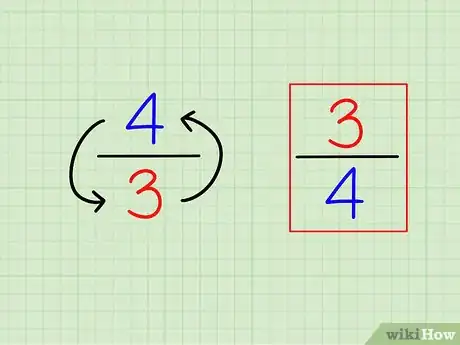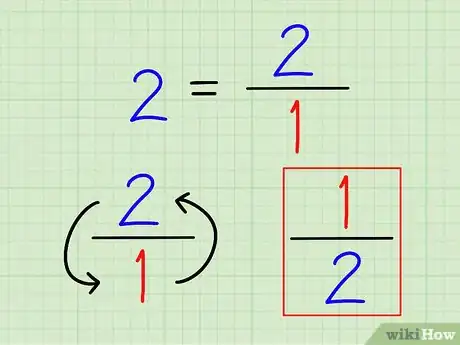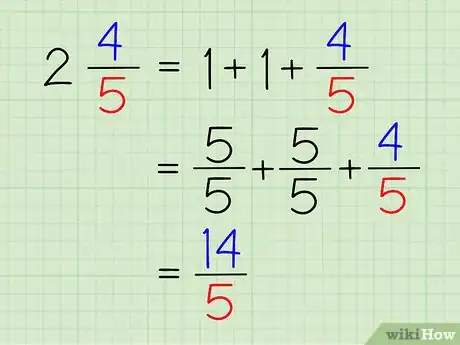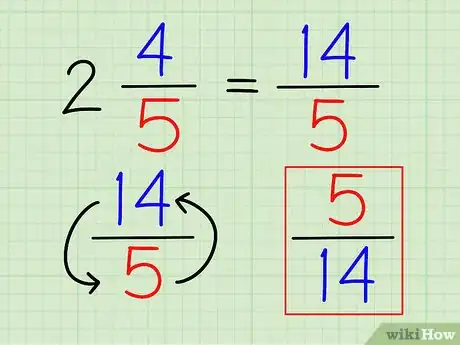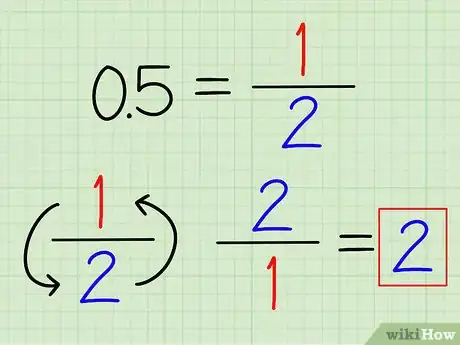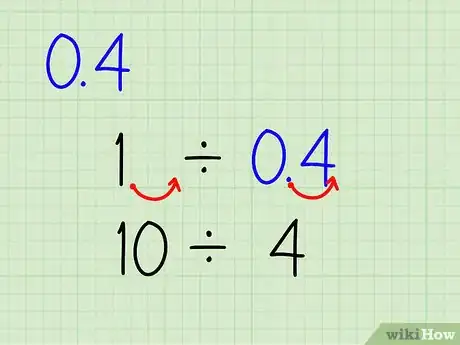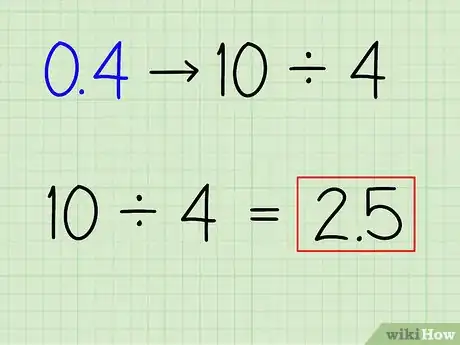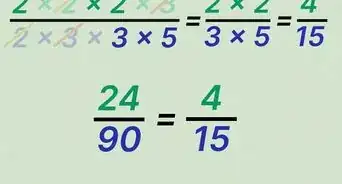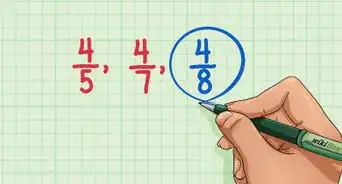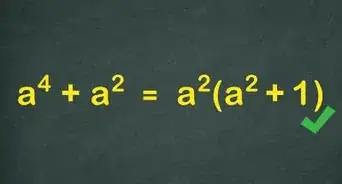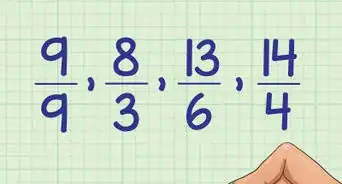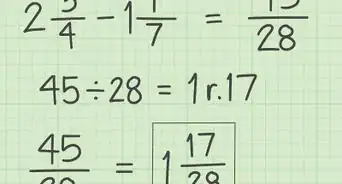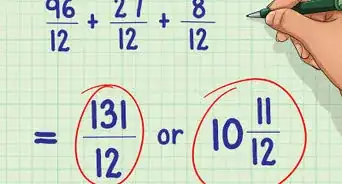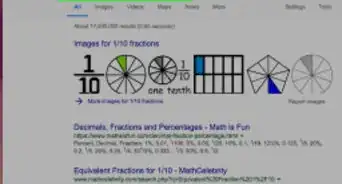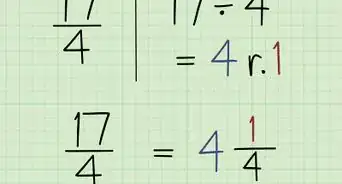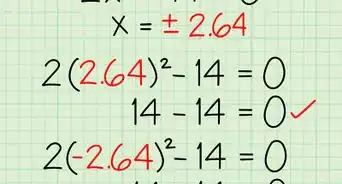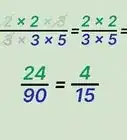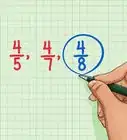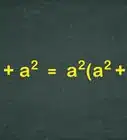This article was co-authored by David Jia. David Jia is an Academic Tutor and the Founder of LA Math Tutoring, a private tutoring company based in Los Angeles, California. With over 10 years of teaching experience, David works with students of all ages and grades in various subjects, as well as college admissions counseling and test preparation for the SAT, ACT, ISEE, and more. After attaining a perfect 800 math score and a 690 English score on the SAT, David was awarded the Dickinson Scholarship from the University of Miami, where he graduated with a Bachelor’s degree in Business Administration. Additionally, David has worked as an instructor for online videos for textbook companies such as Larson Texts, Big Ideas Learning, and Big Ideas Math.
There are 8 references cited in this article, which can be found at the bottom of the page.
This article has been viewed 299,053 times.
Reciprocals are helpful in all sorts of algebraic equations. For example when you are dividing one fraction by another you multiply the first by the Reciprocal of the 2nd. You might also need reciprocals when finding equations of lines.
Steps
Finding the Reciprocal of a Fraction or Whole Number
-
1Find the reciprocal of a fraction by flipping it. The definition of "reciprocal" is simple. To find the reciprocal of any number, just calculate "1 ÷ (that number)." For a fraction, the reciprocal is just a different fraction, with the numbers "flipped" upside down (inverted).[1]
- For instance, the reciprocal of 3/4 is 4/3.
- Any number times its reciprocal will give you 1.
-
2Write the reciprocal of a whole number as a fraction. Again, the reciprocal of a number is always 1 ÷ (that number).[2] For a whole number, write that as a fraction; there's no point in calculating it out to a decimal.
- For instance, the reciprocal of 2 is 1 ÷ 2 = 1/2.
Finding the Reciprocal of a Mixed Number
-
1Identify a mixed number. Mixed numbers are part whole number and part fraction, such as 24/5.[3] There are two steps to finding the reciprocal of a mixed number, explained below.
-
2Change it to an improper fraction. Remember, the number 1 can always be written as (number)/(the same number), and fractions with the same denominator (lower number) can be added together.[4] Here's an example with 24/5:
- 24/5
- = 1 + 1 + 4/5
- = 5/5 + 5/5 + 4/5
- = (5+5+4)/5
- = 14/5.
-
3Flip the fraction. Once the number is written entirely as a fraction, you can find the reciprocal just like you would with any fraction: by flipping it.[5]
- In the example above, the reciprocal of 14/5 is 5/14.
Finding the Reciprocal of a Decimal
-
1Change it to a fraction if possible. You might recognize some common decimal numbers that can easily be turned into fractions.[6] For instance, 0.5 = 1/2, and 0.25 = 1/4. Once in fraction form, just flip the fraction to find the reciprocal.
- For instance, the reciprocal of 0.5 is 2/1 = 2.
-
2Write out a division problem. If you can't change it to a fraction, calculate the reciprocal of that number as a division problem: 1 ÷ (the decimal). You can use a calculator to solve this, or continue on to the next step to solve it by hand.[7]
- For example, you can find the reciprocal of 0.4 by calculating 1 ÷ 0.4.
-
3Change the division problem to use whole numbers. The first step to dividing decimals is to move the decimal point until all the numbers involved are whole numbers. As long as you move the decimal point the same number of spaces for both numbers, you'll get the correct answer.
- For example, you can take 1 ÷ 0.4 and rewrite it as 10 ÷ 4. In this case, you've moved each decimal place one space to the right, which is the same as multiplying each number by ten.
-
4Solve the problem using long division. Use long division techniques to calculate the reciprocal. If you calculate it for 10 ÷ 4, you'll get the answer 2.5, the reciprocal of 0.4.
Community Q&A
-
QuestionWhat is the reciprocal of a squared number?
 DonaganTop AnswererIt is 1 divided by the squared number.
DonaganTop AnswererIt is 1 divided by the squared number. -
QuestionWhat is the reciprocal of 8?
 Community Answer1/8. Since every whole number is invisibly divided by 1 (in this case, 8/1), you just interchange the numerator and denominator, putting the denominator over the numerator and there is your reciprocal, 8/1. In other words, a reciprocal takes a number a/b and turns it into b/a.
Community Answer1/8. Since every whole number is invisibly divided by 1 (in this case, 8/1), you just interchange the numerator and denominator, putting the denominator over the numerator and there is your reciprocal, 8/1. In other words, a reciprocal takes a number a/b and turns it into b/a. -
QuestionWhat is the reciprocal of a+b?
 DonaganTop Answerer1 / (a+b).
DonaganTop Answerer1 / (a+b).
References
- ↑ http://www.mathsisfun.com/reciprocal.html
- ↑ https://edu.gcfglobal.org/en/algebra-topics/reciprocals-and-inverse-numbers/1/
- ↑ https://www.mathsisfun.com/improper-fractions.html
- ↑ https://www.cuemath.com/numbers/mixed-number-to-improper-fraction/
- ↑ https://www.mathsisfun.com/reciprocal-fraction.html
- ↑ https://www.mathsisfun.com/converting-decimals-fractions.html
- ↑ https://www.omnicalculator.com/math/reciprocal
- ↑ http://www.mathwarehouse.com/negative-reciprocals/
- ↑ http://www.mathsisfun.com/reciprocal.html
About This Article
Finding the reciprocal of a fraction is simple. All you have to do is flip the fraction upside-down so that numerator becomes the denominator. For example, the reciprocal of ¾ would be 4/3. You can also find the reciprocal of a whole number. Give the number a denominator of 1, then invert it. For instance, to find the reciprocal of 2, turn it into the improper fraction 2/1, then invert it to get ½. If you’re dealing with a mixed number, things get a little trickier. First, change the mixed number into an improper fraction. To do this, multiply the whole number by the denominator of the fraction, then add the product to the numerator. The resulting number will become the numerator in your improper fraction. Then, invert the fraction to find the reciprocal. For instance, 2 ½ is the same as 5/2, and the reciprocal is 2/5. To find the reciprocal of a decimal, convert the decimal to a fraction first if you can, then invert it. For example, .5 is equal to ½, which would give you a reciprocal of 2/1. If you want to learn when you need to use reciprocals, keep reading the article!
